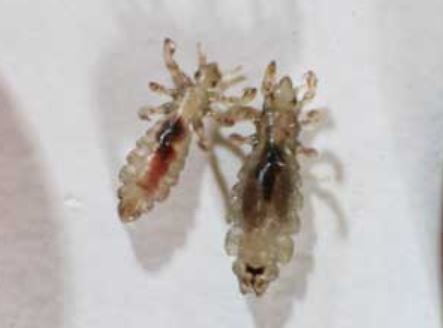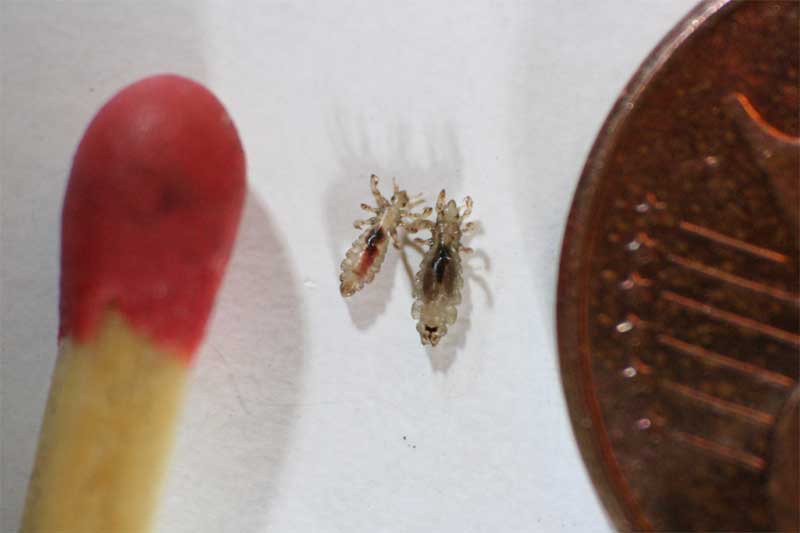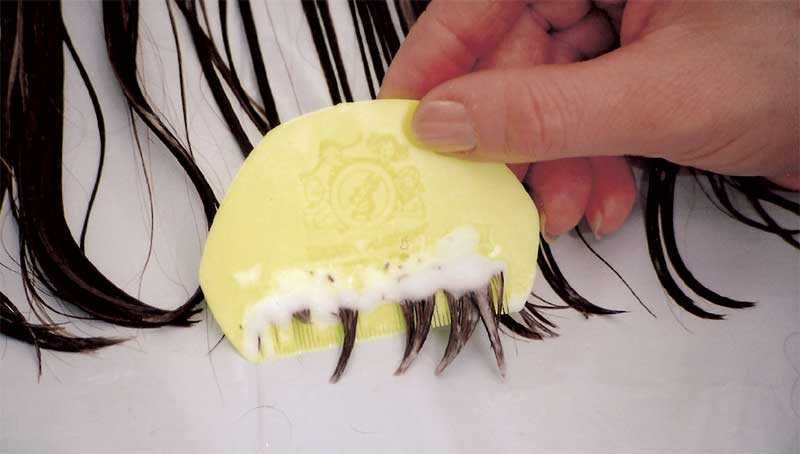Getting rid of head lice can be a challenge. So much so that just hearing the word “lice” can cause thoughts of panic and fear in a parent if they don’t know what to do to effectively take care of the problem. It can raise their stress level several decibels for sure. Luckily we know what to do and are here to help! So fear not!
There are multiple methods for getting rid of head lice, and they each tackle the lice in a different way. The three primary ways of treating and eliminating head lice are:
- Pesticide Treatments (Poisoning)
- Dimethicone Treatments (Smothering)
- Wet Combing (Extraction)
Any chemical treatments should be used in combination with wet combing to ensure the best results.
An itchy scalp may be a sure sign you have head lice. But did you know, it can take several weeks before you develop a reaction to lice bites and begin to itch? When it comes to head lice, knowledge is power. In addition to discussing how to treat head lice, this article provides information on how lice are transmitted, where they live (and where they don’t), and how to recognize and check for them.
Are you itching yet?
You may also be interested in reading these two related articles “How To Get Rid Of Earwigs” and “How To Get Rid Of Fleas“.
Essential Head Lice Information To Know First
What Are Head Lice?
Head lice (pediculus humanus capitis) are tiny parasitic insects that live on the human scalp, feeding on blood multiple times per day. They are about the size of a sesame seed.
Lice are wingless and cannot jump or fly, but will crawl between human hosts, typically through head-to-head contact.
What Is The Lifecycle Of Lice?
Lice eggs are known as nits. They typically hatch within 7 to 10 days of being laid and are whiteish in color. Nits are typically laid near the base of the hair shaft (within ¼” of the scalp).
Once hatched, lice take about 10 days to mature into adults (referred to as nymphs). Once mature, adult lice live for up to 30 days on the scalp. During this time, females will lay between 50 and 150 eggs (up to 5 per day). Adult lice are dark brown in color.
Are Lice Harmful?
Head lice are a nuisance but are not harmful. They are not known to transmit disease in humans. If head lice remain untreated, eventually the infected person develops an insensitivity to the saliva from the lice bites. This causes an itching sensation. Secondary infections have been known to occur as a result of excessive scalp scratching, when bites become infected with bacteria found on our skin.
How Are Lice Transmitted?
Head lice is most common among preschool and elementary children, where it is typically transmitted via head-to-head contact in schools, playgrounds and camps. Transmission may also occur when sharing pillows, blankets, hats, headrests, hairbrushes, and hair accessories with an infected person, although this indirect transmission is less common.
How Do I Check For Lice?
To check for lice, start at the crown of the head and part the hair to expose the scalp. It is not likely you will see lice moving since they move quickly and avoid light. What you will typically see are the light-color lice nits (eggs) attached near the base of the hair shalt. Check multiple sections of hair in various areas of the head.
Once someone in your household has been infected with lice, it is common for lice to be transmitted among other members of the household. Be sure to check everyone in the family.
Best Methods To Get Rid Of Head Lice
Pesticide Treatments
Several over-the-counter products incorporate pesticides (e.g. pyrethrin, permethrin) that kill lice by poisoning them. These types of products have historically been effective at treating lice. However, in recent years, widespread use of pesticide treatments has led to the evolution of lice mutations that are resistant to these chemicals.
While these products still may be effective for you, we prefer other methods for treating lice. If you do choose to use chemical treatments, we recommend consulting your physician before using them (especially on children).
Dimethicone Treatments
Dimethicone is a silicon-based ingredient found in many skincare and haircare products. Unlike pesticides, dimethicone is not poisonous. When using topical lice treatments with dimethicone, the product blocks the airways of lice, effectively smothering and dehydrating them.
Because these treatments do not contain pesticides, lice do not build up resistance to them. These treatment products are also common for treating lice in children, when non-toxic products are favored.
Nix Ultra is one of the most popular and recommended dimethicone-based lice treatments.
Wet Combing
Wet combing is the process of physically extracting all nits and lice from the hair using a special tool, called a nit comb. Nit combs are fine-toothed combs (typically stainless steel) that are specifically designed to separate nits from the hair shaft.
Wet combing is a common and effective means of dealing with lice. But depending on the length and thickness of the hair, wet combing can be a long and tedious process. There are professionals that specialize in lice treatment and will perform the web combing extraction for you. Professional Nitpickers…. yes, it is a real thing! Most major cities have professional lice treatment and removal salons. A professional wet combing can range from $150 to $200.
To do wet combing yourself, you will need a standard wide tooth comb, a special nit comb, paper towels and a hair lubricant (any thick, creamy hair conditioner will suffice).
Step-by-step wet combing:
- Apply the conditioner to dry hair.
- Comb the conditioner through hair with a wide tooth comb (from roots to tips).
- Divide saturated hair into sections, securing each section with a clip.
- Unclip one section at a time, starting with sections at the base of the neck.
- For each section, separate out small segments of hair at a time.
- Comb through a small segment of hair with the nit comb, starting at the scalp and passing through the length of the hair to the ends.
- After passing through the hair, wipe the comb on a white paper towel.
- Carefully inspect the towel for any extracted lice or nits.
- Repeat step 6 through 8, passing through the same segment of hair multiple times, until no new lice are seen after wiping the comb on the paper towel.
- Start with a new section of hair, working your way to the top of the head.
Once you have completed the wet combing, wash hair thoroughly. Also, be sure to clean your combs, soaking them in either alcohol or hot water for at least 5 minutes.
Repeat the wet combing every other day until you do an entire wet combing without finding lice.
Lice Prevention
There are numerous shampoos and leave-in sprays with natural ingredients that lice do not like (tea tree, rosemary, peppermint). While these products do not always prevent head lice, they can be effective repellants that significantly reduce the chances of a future head lice outbreak. (The product my daughter used and loved was Ladibugs Mint Spray).
How Do I Get Rid Of Lice In My House?
Because lice do not live long apart from humans (only 24 to 48 hours), lice within your home tends to not be a significant issue. But if someone in your household has head lice, you will want to take a couple of precautions.
Any clothing, pillows and linens that have come into contact with an infected person within the past 2 days should be washed and dried at the highest temperature allowed for the fabric. Any linens or stuffed animals that cannot be washed, you can simply place in a sealed plastic bag for 2 weeks. This is sufficient time to ensure all nits have hatched and all lice have died.
Hairbrushes, combs and hair accessories the infected person has used should be soaked in alcohol or hot water (at least 130 degrees F) before immediately using again.
Final Thoughts
Chances are, at some point, you or someone you know will get head lice. And if you have children, odds are even greater. With a good nit comb, a little conditioner, and a lot of patience, you can extract them fairly quickly. Follow-up web combing with a dimethicone-based treatment to take care of any nasty nits that may have been missed. You and your family can be lice free in no time!
Related Questions
Can My Pet Get Lice?
No, your pets are not at risk for being infected because humans are the only suitable host for head lice. If your pets are itching, fleas are the most likely culprit.
Why Don’t Lice Bite Other Places On The Body?
Lice do not like light, love to be warm, and need blood to survive. A head full of hair is the perfect, cozy environment for lice to feed, stay warm and avoid light.


